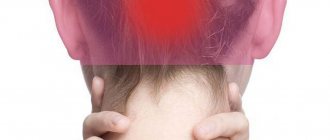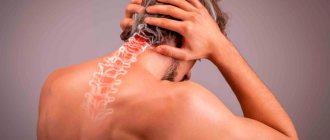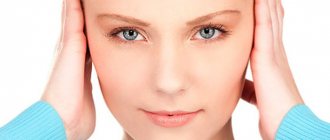A shooting headache is characterized by single “shots”, less often in a series. During their lifetime, 1–2% of the population may periodically experience lumbago; the question is how dangerous they can be, and whether it is worth sounding the alarm right away.
In its standard form, the pain is of medium or high intensity, as a rule, it more often affects women, and often occurs against the background of headaches of a different nature, for example, migraines. Painful sensations are localized in the area of the eyes and the front of the head, and from 1 to 50 attacks can occur per day.
First of all, it is necessary to rule out problems with the eyes: visit an ophthalmologist if attacks occur frequently and are characteristic of the same place in the eye area. If this is not an eye pathology, then shooting pain in the head may be a symptom of neuralgia.
Possible reasons
Shooting pain in the head on the right is a symptom of many diseases. They can appear in any healthy person, in the absence of organic disorders of the nerves and blood vessels. In this case, the pain is caused by nervous tension, fatigue after physical exertion, alcohol intoxication or food poisoning. They go away after proper rest. However, headaches can be highly intense or occur with a certain frequency - these types require more detailed diagnosis.
Shooting pain in the head associated with nerve diseases
Unilateral shooting pains in the head (lumbago) are a sign of inflammation or mechanical impact on nerve fibers. On the right side is the trigeminal nerve. It innervates the soft tissues and mucous membranes of the head, upper and lower jaws, as well as the dura mater of the brain. It is represented by the fifth pair of cranial nerves. Its inflammation or mechanical impact causes attacks of neuralgia - nerve pain. It manifests itself with the following symptoms:
- shooting unilateral pain that covers half of the head, intensifies and decreases in certain positions;
- the duration of the attack is from 10 seconds to several minutes, the rest of the time discomfort may be felt along the nerve;
- additional symptoms, including nausea, dizziness, increased heart rate.
Neuritis is an inflammation of the nerve that can occur in a chronic form. Among its causes are hypothermia, decreased immune defense, especially in the off-season, injuries and mechanical pressure on the nerve. The disease requires timely treatment, as it can lead to disruption of the innervation of soft tissues and internal organs, and the membranes of the brain.
Migraine
Another cause of lumbago on the right side of the head is migraine. This is an attack of headache that occurs without an exact cause and is characterized by a certain periodicity. It is accompanied by additional symptoms that occur simultaneously with the headache or precede it. These include:
- dizziness, nausea and vomiting;
- increased sensitivity to light, lacrimation;
- decreased hearing and vision;
- numbness, deterioration of sensitivity of the fingers.
You can relieve migraine symptoms at home with painkillers. However, if this syndrome occurs frequently, specific medications are prescribed that should be taken regularly.
Cluster headaches
Cluster pain is highly intense, but is rarely diagnosed. The exact cause of their appearance remains unknown, but a vascular component is likely. Shooting pain in the head on the right or left side occurs without warning and is accompanied by additional symptoms:
- muscle weakness, drooping of the upper eyelid on one side;
- shortness of breath, which manifests itself even in the absence of physical activity;
- increased sweating, increased heart rate;
- sensitivity to bright light, lacrimation.
Cluster headaches can appear with a clear frequency, occurring at the same time over several weeks or even months. An acute attack lasts no more than 5–10 minutes, but the aching pain and discomfort then continues for several more hours.
Concussion
Impacts to the right side of the head are the main cause of closed head injuries and concussions. Falls and bruises lead to impaired blood circulation in certain areas of the nervous tissue and the appearance of signs of ischemia. The headache associated with a concussion is sharp, shooting, and very intense. Additional signs are also observed:
- blurred vision, appearance of black dots and circles before the eyes;
- nausea, vomiting;
- impaired coordination of movements;
- decreased sensitivity of the limbs;
- fainting.
Headaches can occur long after a traumatic brain injury. The time for complete recovery depends on the size of the damaged area, the age of the patient and the presence of concomitant diseases of the cardiovascular system.
Increased intracranial pressure
Periodic increases in intracranial pressure occur in most of the population, regardless of gender and age. However, it is impossible to accurately measure this indicator at home. It represents the total pressure of all fluids that are in the cranium: the contents of the cerebral ventricles, blood in the vessels, and the brain tissue itself. The diagnosis is made based on indirect signs:
- headache, which can be concentrated on the right side of the head, often has a girdling character;
- soreness in the eye area and behind the eyes, blurred vision;
- nausea, disorders of the digestive system;
- heart rhythm disturbance.
Intracranial hypertension manifests itself in attacks. It may be associated with a lack of oxygen in the room, intense physical activity, stress and tension.
Ear diseases
Otitis is an inflammation of the ear. The disease can be acute or chronic and manifests itself as pain on one side of the head. Depending on the location of the source of inflammation, external, middle and internal otitis are distinguished. Its cause is hypothermia, infectious diseases and acute respiratory viral infections, as well as injuries. It is important to treat otitis media in the early stages, since the disease is dangerous due to the addition of a bacterial component and the development of purulent inflammation. In the later stages, without timely treatment, the infection may spread to the membranes of the brain and develop meningitis.
Diseases of the cervical spine
Pain on the right side of the head can be caused by poor circulation. A common cause is diseases of the cervical spine, in which compression of the arteries supplying the brain occurs. The following disorders can be diagnosed in this area:
- curvature of the spine (scoliosis, kyphosis);
- osteochondrosis is a chronic disease in which damage to intervertebral cartilage occurs, narrowing of the space between the vertebrae and compression of blood vessels;
- spondylosis is a pathological fusion of two adjacent vertebral segments, which occurs as a result of the proliferation of bone tissue;
- intervertebral hernias are the result of protrusion of cartilage due to displacement of the vertebrae, uneven load and incorrect posture.
Shooting pain in the right side of the head is the result of a lack of oxygen in certain areas of the brain. Chronic ischemia is dangerous to health and can lead to stroke. The pain goes away after its underlying cause is eliminated.
Varieties
It is customary to distinguish pain in the head by the level of its intensity. The pain can be insignificant and unnoticeable, moderate in severity, intense and unbearable for a person. There are four main varieties:
- Voltage. This type of pain syndrome is characterized as an attack in which a person experiences a squeezing sensation in the head (as if a hoop was put on the head and it is gradually being squeezed).
- Migraine. Pulsating pain, which is usually localized in the frontal and temporal lobes (almost always forms in one of the temples). Migraine pain in two parts of the head at once is extremely rare (about 2-3% of cases).
- Bun. The pain sensations, strong and often unbearable, are poorly tolerated by people. The pain usually affects the left or right half of the head (it can radiate to the nasopharynx, jaw, eyebrows, eyes and other parts of the face).
- Mixed pain. It is extremely difficult to diagnose such pain sensations, because in this case several types of pain can be mixed at once.
Diagnosis of shooting pain in the head on the right side
The Clinical Brain Institute specializes in the diagnosis and treatment of headaches. If it bothers you often or occurs with high intensity, it is recommended to consult a therapist. Based on the results of the examination and medical history, additional consultation with an ENT doctor, neurologist and other specialized specialists may be required. To determine the cause of headache, the following examination methods are prescribed:
- blood tests (clinical and biochemical) - will indicate an increase in the concentration of leukocytes (indicators of inflammation), an imbalance of microelements, an increase in glucose levels and other pathologies;
- MRI, CT of the brain is a modern technique, thanks to which you can obtain a three-dimensional image of the area under study, identify areas of ischemia, neoplasms, and blood supply pathologies;
- ECG (electroencephalography) - analysis of bioelectrical conductivity of nervous tissue;
- ultrasound examination of the vessels of the head and neck;
- special examination techniques by an otolaryngologist to exclude otitis media and other hearing diseases.
Timely and accurate diagnosis is the key to correctly prescribing a treatment regimen. At the Clinical Brain Institute you can undergo a full examination using modern equipment and get the most accurate results.
What does a heavy head feel like?
It’s not just a headache that can interfere with normal perception of the colors of the world around you and living in peace. Sometimes a tedious heaviness in the head is perceived worse than a migraine attack. After all, a migraine will go away after a certain period of time, and the feeling of a burden in the head can torment a person for a very long time.
How do patients describe their feelings?
- In the morning, my head pulls towards the pillow.
- There is a feeling that the skull has been filled with stones.
- It was as if blood from the whole body had collected in the skull.
- Metal disks move heavily in the brain.
- Difficulty concentrating.
- Information is not perceived adequately.
- I want to put my head in my arms and sleep, sleep, sleep.
- Nausea creeps up my throat.
- Lethargy falls on the body, it is difficult to even raise an arm.
Often the headache does not hurt, but it is heavy and cottony. Unpleasant sensations can occur in the morning and do not disappear even after a long sleep.
Treatment methods
Doctors will select an individual treatment regimen that will help relieve not only the pain syndrome, but also its cause. Depending on the cause and nature of the headache, the patient’s age and the presence of concomitant diseases, the following techniques may be prescribed:
- drug treatment: for mild headaches, use non-steroidal anti-inflammatory drugs (Ibuprofen), as well as painkillers (Analgin);
- antibiotics - indicated for purulent otitis and other diseases that are accompanied by bacterial infection;
- physiotherapy - a course of procedures designed to improve blood circulation and innervation of certain areas;
- nootropics are substances that improve blood supply to the brain and are used as an addition to the main therapy regimen.
The Clinical Brain Institute provides treatment for headaches of various origins in inpatient or outpatient settings. Therapy is carried out under the supervision of specialists, with constant assessment of its effectiveness and the dynamics of the patient’s condition. Doctors warn that self-medication can be dangerous and lead to complications, so at the first symptoms it is important to seek medical help.
Clinical Brain Institute Rating: 4/5 — 13 votes
Share article on social networks
Prevention
The use of certain preventive measures will reduce the intensity, reduce the frequency of painful manifestations, and eliminate the need for constant treatment:
- You need to take a break from any activity for a few minutes to do a light massage or exercise.
- Living spaces and workplaces should be regularly ventilated.
- It is important to follow the principles of proper nutrition, eat vegetables and fruits.
- In cold weather, try to avoid hypothermia, make sure that there is no air in the ears and neck area, and avoid colds.
Shooting pains are not an independent pathology. A thorough diagnosis will allow the doctor to identify what prompted its appearance and determine treatment tactics. With self-treatment, there is a high probability of developing complications. Simple preventive measures will help avoid shooting headaches.
Diagnosis of cranialgia
To prevent a part of the head from shooting through acute pain, it is necessary to accurately determine the reasons for its occurrence. To do this, you often have to undergo an extensive examination.
After being examined by a therapist and passing the necessary tests, the patient is referred to specialists:
- The ENT doctor will check the hearing organs and examine the nasal cavity to rule out infectious diseases;
- a vertebrologist will check the condition of the spine to exclude cervical osteochondrosis;
- A neurologist performs brain diagnostics to exclude dangerous pathologies and inflammatory processes.
If one of these diseases is detected, a thorough examination of the head and cervical spine is prescribed: MRI, X-ray, ultrasound.









